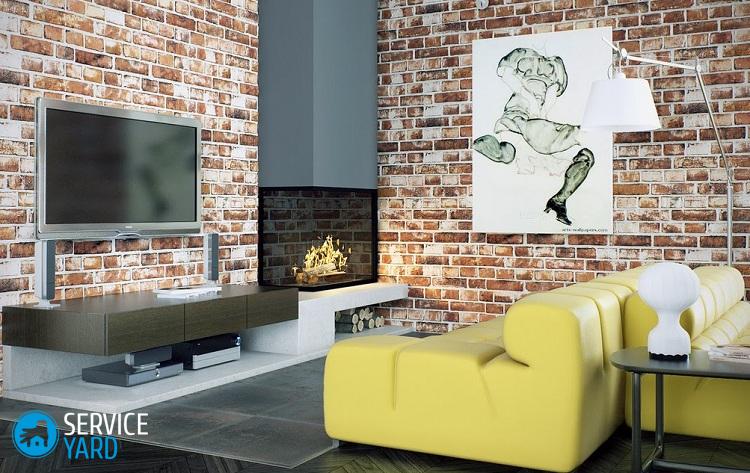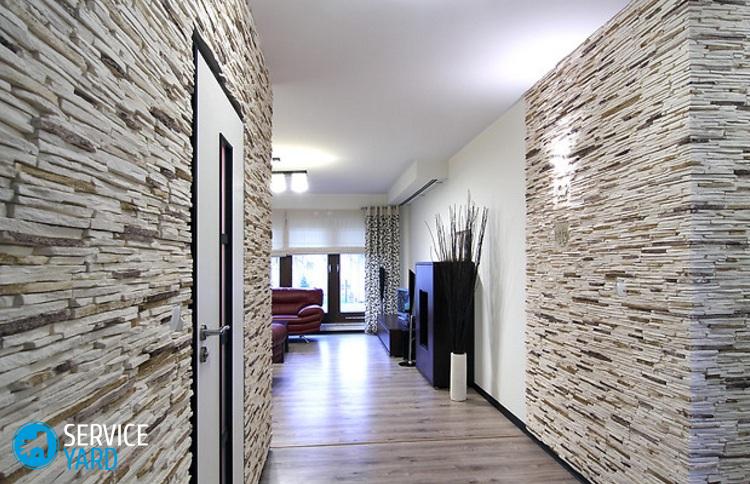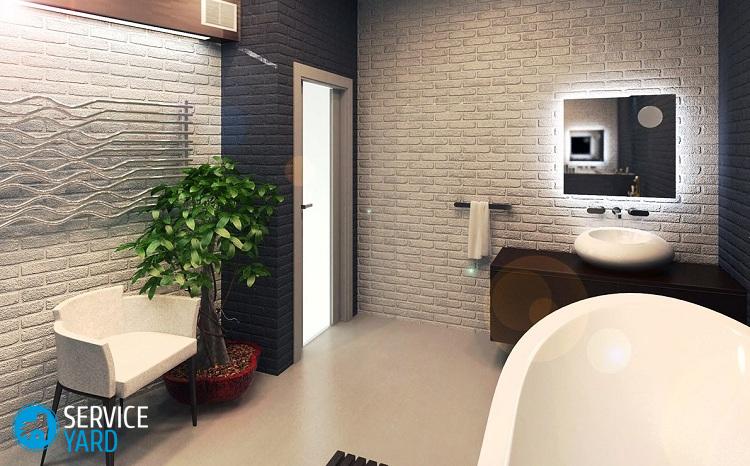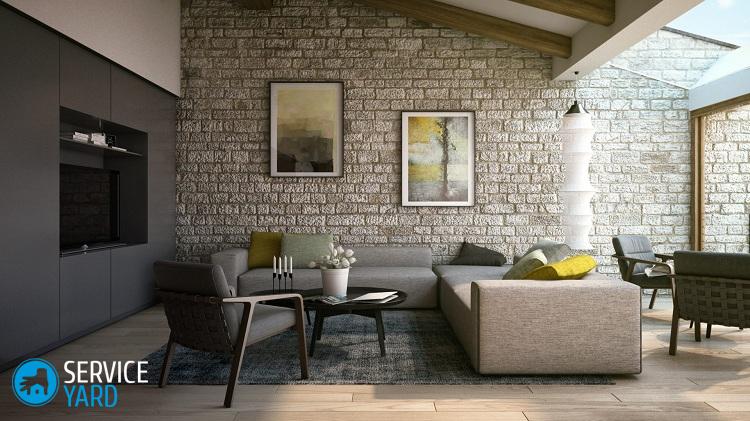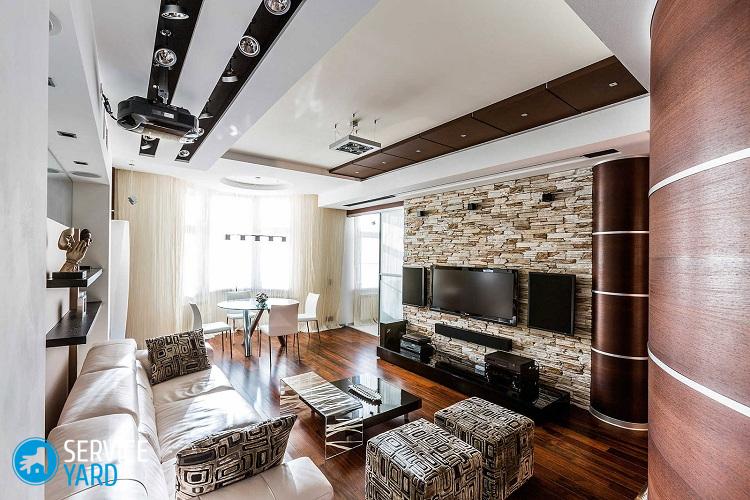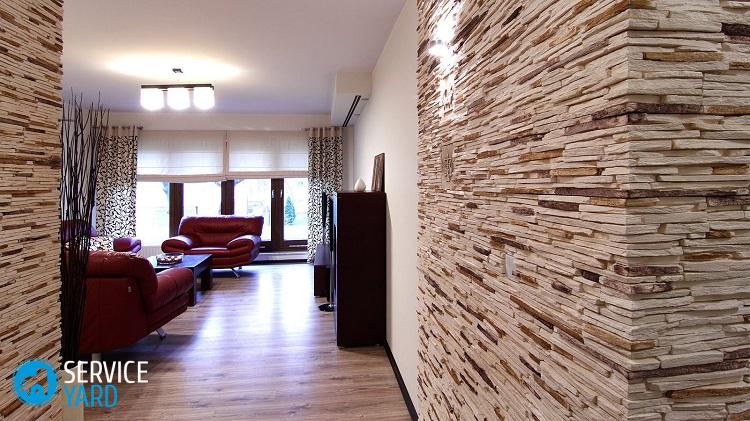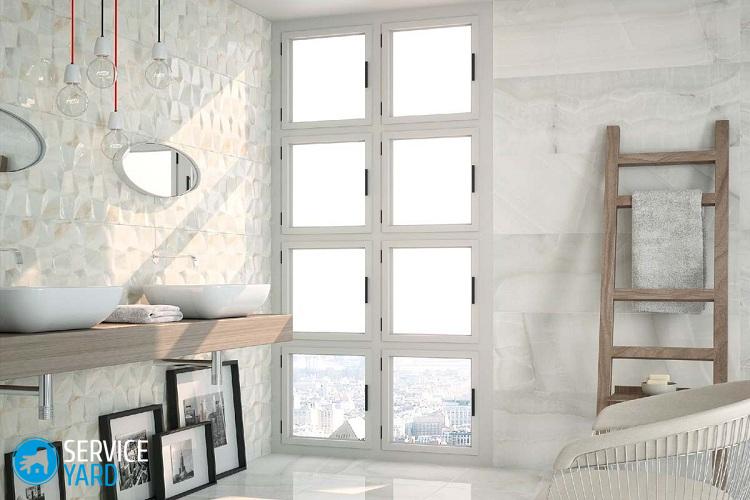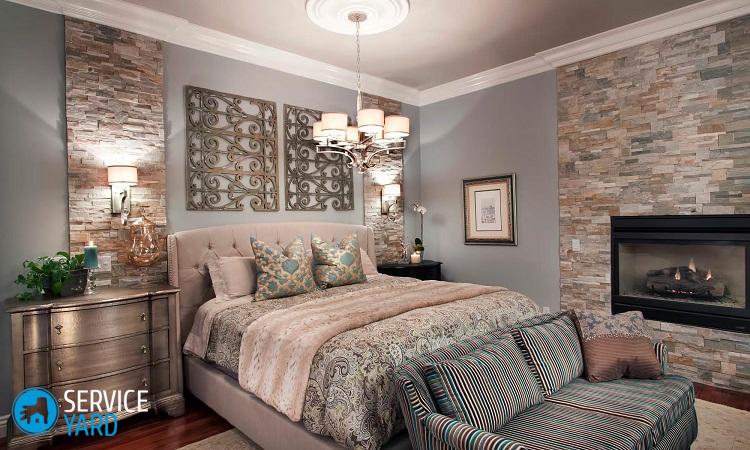Decorative tile
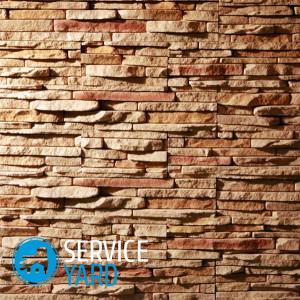
You conceived the repair and do not know how and how to design the surface of the walls? Then carefully look at a material such as decorative tile. She changes beyond recognition any room - whether it is a city apartment or a cottage. The times when tiles were used only for facades have long passed. Designers very quickly accepted and fell in love with this material, because it looks great in any interior, with it you can create unusual and unique compositions. Moreover, the tile is not only beautiful, but also very practical, because such a material is plastic, light, but at the same time durable and resistant to various influences. In addition, wall decoration with decorative tiles is possible with your own hands, without the help of specialists. Find out how to choose the right material and how to competently conduct the work.
to contents ↑Types of Tiles
Decorative wall tiles, which are used for wall decoration, can be very different. It will be appropriate in any room and in any style. With its help, you can give the interior a unique appearance that will be significantly inferior to decoration with ordinary wallpaper.
Materials Based
Consider the features of the most popular types of this finishing material:
- Natural stone - quartz, granite and marble, is one of the most sought-after and most expensive materials. It has a long service life and high resistance to mechanical damage, moisture and even household chemicals. And yet - this is the most environmentally friendly and natural material.
- Similar in texture is an artificial analogue. It copies not only the external similarity, but also all the same advantages, although it costs less. Another plus is a variety of colors and various textures that can be set to the material. For its production, a mixture of cement, sand, various pigments and fillers is used. It is also lighter than natural stone and easier to work with.
- The undisputed leader in the construction and finishing industry is gypsum. This soft and plastic material is often used for interior decoration. Since it is very light, even thin plasterboard partitions can be decorated with it. Wall decoration with decorative gypsum tiles is available even to a teenager, because the material is easily cut with a knife and tightly attached to the surface. This finish can even be done independently, using special forms.
- Plastic materials are not afraid of moisture, so they are great for wet bathrooms and are a budget alternative to traditional ceramic tiles. The bathroom can be finished with various PVC products. Light weight allows you to fasten such material to a metal or wooden crate, work is quick and easy.
Important! In order to create a beautiful surface decor, it is not necessary to use only natural materials. You can use high-quality imitation of gypsum. It is cheaper, but stronger than polymers, and it looks very naturalistic.
Design and purpose
In appearance, decorative tile is divided into several groups:
- Tiles with a pattern or a specific pattern refers to the classic version. This decor is used as the main or to complement the more textured finishing materials.
- A narrow tile in the shape of a rectangle is called a border.It serves as a kind of border design - it is used at the junction of the wall and ceiling or at a certain level of the wall.
Important! Many manufacturers supplement the main collections with a border that repeats the color or texture, which makes it easier for buyers to find suitable materials.
- Another type of tile is a panel. Each element of such a collection contains a print or pattern. When connecting the puzzle together, a gorgeous composition is obtained.
- Freeze tile, which means “free size”, means the free placement of elements on the wall. The drawing is present, but its placement is chaotic.
to contents ↑Important! The pattern of decorative wall tiles can be repeated in the flooring. Such inserts, as a rule, complement the collection. Visually, they revive even the simplest floor composition due to a contrasting color or pattern.
Areas of use
It is very important to choose the right decorative tile for the interior decoration of the walls, taking into account the characteristics of a particular room. This will provide comfort to the owners of the apartment and extend the life of the coating:
- For the kitchen, you should choose a material that is not afraid of moisture, temperature extremes, mechanical stress and quietly tolerates processing with household chemicals. Often, for the design of walls in the kitchen, and especially for an apron, they use a very popular decorative mosaic tile, creating magnificent abstract and colorful designs from it.
- The tile for the bathroom should have the same characteristics, because there are both moisture and steam, heat. And this room requires cleaning even more often than in the kitchen. Therefore, here in the first place comes such a property as resistance to various cleaning substances. And decorative tiles have this ability - and this creates a great demand for this material.
- Hallway or corridor often have a small area. And the decorative tiles for these walls no longer have such stringent requirements. The main ones are strength and abrasion resistance.
to contents ↑Important! If you want the decoration to be beautiful and using expensive materials, use natural or decorative stone to frame around the doorway. This will give the interior a novelty and style.
Tile adhesive
For wall decoration with decorative tiles, it is important to choose the right glue. If the fixation is not reliable enough, then soon your new repair will need restoration. Therefore, when choosing this material, consider the following points:
- For laying tiles - a heavy material, most often a fixer is used based on the most common cement, which gives reliable adhesion of surfaces. It can be used for any other types of finishes.
- However, for indoor use, a gypsum mixture is more preferable. It reliably fixes elements on the wall, is easily cleaned from the front surface and has a white color, which simplifies the stage of finishing.
- Many people use silicone sealant to decorate the walls with tiles. Its use is a moot point; many masters will criticize this option. But if you use not heavy natural stone, then this glue will give a strong adhesion to the surface.
to contents ↑Important! Glue components should be not only high-quality, but also fresh. If the powder bag stood for a long time in the opened state, then such material is better to throw away. Its use will lead to quick drying of the composition or insoluble lumps. And this will complicate your work and the adhesion of surfaces will be unreliable.
Surface preparation
Before you start decorating the walls with decorative tiles, regardless of the type of material chosen, it is necessary to prepare the surface. Here, all work is carried out in stages:
- The old coating, if any, is completely removed.
- Walls are cleaned of glue and other finishing materials used during previous repairs.
- Then the walls are plastered to level the surface and get rid of defects.
- If the differences on the wall surface are significant, then drywall is used in the work, because the tile should be laid exclusively on a flat surface, especially fragile materials and large elements.
to contents ↑Important! For better adhesion of surfaces, it is worth treating the walls with a primer. Only after it has completely dried can you proceed to further work.
Laying tiles
Laying tiles on a prepared surface is a fairly simple process. The main thing, as with any type of finishing work, is to observe a clear sequence:
- Previously, marking is applied to the surface. To do this, it is better to use a level so that the tile is fixed evenly, without obvious distortions in one direction or another.
- To apply the composition to the tile, use a spatula with cloves. The mixture applied in this way will give better adhesion to the materials.
- The elements are fixed with slightly indenting movements.
- After laying the first row and checking it for evenness, proceed to further processing the wall. Each new row should overlap the seams of the previous one, like a brickwork.
Important! If the tile selected for decoration is of different sizes, then it can be laid without observing a strict order. This will help to avoid combining two identical elements with each other.
- If necessary, the tile on the front side is tapped with a mallet.
Useful Tips
To avoid the most common mistakes made not only by beginners, but also by experienced masters, we will give some useful tips:
- Glue must be prepared according to the instructions. If you add a little more water than you need, then you risk not achieving a strong fixation.
- Stir the composition better with a drill with a special nozzle.
- It is better to start laying from the bottom, from the second row. Always be guided by the markup - this allows you to maintain the clarity of the lines.
- Too tightly pressed the tile against the wall is not worth it. The adhesive will simply come out from under the element on the sides and the fixation will not be strong enough.
- To make the seams even, use plastic crosses in your work.
- After the finish is finished, immediately remove the mixture that fell on the front surface of the tile with a damp sponge. When it dries, it will be much more difficult to do.
DIY tile
Even if you do not have the minimum building skills, it is not difficult to make decorative plaster tiles with your own hands. To do this, you will need a room for work - let it be a garage or utility room. The main thing is that the humidity is not too high, this is important in the process of setting gypsum. And the necessary set of tools and materials:
- dry gypsum;
- slaked lime;
- plain tap water;
- polypropylene mesh;
- shapes that fit your idea and future design;
- a project of how it will look in order to understand what joints will be between the tiles;
- conventional construction mixer or drill with the appropriate nozzle;
- container for mixing components.
Important! In order to make tiles, you can use ready-made matrices made of polyurethane or silicone. You can easily order them online. Creating a shape is also possible from wood with your own hands.
Solution
High-quality mortar for the manufacture of decorative tiles can be different. Someone uses the manufacturer's instructions on the packaging, but experienced builders advise taking the following recipe as a basis:
- gypsum - 6 parts;
- lime - 1 part;
- water in a ratio of 1: 0.7.
Using a mixer or drill with a nozzle, mix all of these together. But you need to do this quickly so that the gypsum does not have time to set. And here's what else to consider:
- When the composition has reached the required consistency, it must be poured into molds and the mixture leveled with a spatula.
- Forms must be prepared in advance, exposing them on a flat surface.
- Gypsum needs to be kneaded for one-time use, for the future this mixture is useless to prepare, since it quickly hardens.
Important! Cement should not be added to the composition for the production of decorative gypsum tiles, although it will strengthen the finished product. It will also increase the risk of a fungus in the future.
Important nuances:
- Keep in mind that the finished mixture sets quickly enough - a maximum of 20 minutes. But to gain strength, it is necessary to hold the molds in a dry, warm room for at least a day.
- The air that enters the mixture when it is poured into molds can cause defects on the finished product. To avoid this, remove bubbles from the surface with a spatula or a slightly shaking shape. If there is a vibrating table, then its use will be the best option.
- After 24 hours have passed, the finished tile is removed, but carefully so as not to damage the product, since it is still fragile. Then the plaster blanks are left to dry further, already without forms.
- If you want to speed up this process, you can use a drying chamber. Leaving the tile for these purposes in the sun is not worth it - the gypsum will dry out and the tile may crack.
- You can give the desired color to finished products by adding pigment to the mixture or after drying the molds. To do this, use a brush or spray gun. Coloring in different shades gives a beautiful effect, with each layer having to be applied after the previous one has dried.
Stock footage
As you can see, the possibilities of using decorative tiles - are endless. It is made from various raw materials in a wide range of colors. Well, the choice of different textures will surprise even the most demanding owner. However, if the impossible happened, and you could not find the right finish for your walls, decided to save money or simply like to create everything with your own hands, then working with plaster is the best option for solving the problem.
- How to choose a vacuum cleaner taking into account the characteristics of the house and coatings?
- What to look for when choosing a water delivery
- How to quickly create comfort at home - tips for housewives
- How to choose the perfect TV - useful tips
- What to look for when choosing blinds
- What should be running shoes?
- What useful things can you buy in a hardware store
- Iphone 11 pro max review
- Than iPhone is better than Android smartphones




